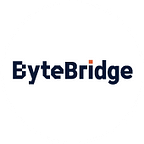Data Intelligence is the Core of Autonomous Driving
Whoever can accumulate valuable data efficiently at a sustainable cost will have the chance to live to the day of final victory. The iteration of artificial intelligence requires more feedback and training. In this process, it is necessary to do an excellent job in data security, using server-side computing power to conduct sufficient security verification. The most important thing is that the AI product implementation needs to abide by policy guidance in various countries.
For AI, the most important thing is data. Even if it is manually labeled, it should start from the most valuable part. So how to find high-value it in the vast amount?
For the problem of data bias, it is necessary to find the problematic scene and supplement enough labeled data for this scene through the AI system — to find a sufficient amount of the same type of other similar data. Only with this sample deployment can a better AI model be made. As adequate data is the prerequisite for making a good model, many companies invest lots of resources to build their closed-loop data intelligence, which is the success of AI autopilot technology.
The scope is the inevitable basis for the victory of the autonomous driving battle. If there are only 10,000 cars or only 100,000 cars for autonomous driving, it will not be stronger than the autonomous driving ability of 1 million vehicles. Even if the algorithm is robust, it can’t replace the lack of data. The core point is how to make the accumulation of valuable data sustainable and efficient.
How to Process Data
Self-driving cars generate a lot of data during operation. Vehicles need it to train their intelligent system to draw maps, navigate routes, avoid obstacles, identify traffic signs, and understand passengers’ preferences. Different passengers create personalized travel experiences. At the same time, self-driving cars will also generate massive amounts of data through cameras, radar, lidar, sonar, GPS, and other sensors. These sensors will be further used to improve car driving patterns, urban traffic planning, etc. The generation and processing of this kind of data require new infrastructure, systems, and business models to deal with data sharing and usage issues.
The issues that companies and regulators will face in the next few years are who owns the data, who uses the data, and who handles the data. As technology uses more data in the development process, how to distribute and whether to monetize these data becomes critical.
The High Volume of Structured Data Required
Last year, at the CVPR 2019, Andrej Karpathy, the Senior Director of AI at Tesla responded to the question below:
How to estimate the volume of labeled data required to train and validate the self-driving cars for a particular scenario?”
378 hours of data.
The more accurate annotation is, the better algorithm performance will be.
Any tiny error during a driving experience may lead to dreadful results. Nowadays, people are more and more concerned about the driving safety issue as several self-driving automobile accidents happened.
What we need to be clear is for AI companies and the entire industry, data annotation is an important part of the realization of artificial intelligence. The accuracy and efficiency of the labeled data affect the final result of the artificial intelligence algorithm model
Common Data Labeling Types Include
- 2D Bounding Boxes
- Lane Marking
- Video tracking annotation
- Point Annotation
- Semantic Segmentation
- 3D Object Recognition
- 3D Segmentation
- Sensor Fusion: Sensor Fusion Cuboids/Sensor Fusion Segmentation/Sensor Fusion Cuboids Tracking
AI-assisted Data Labeling Tool
It’s challenging for self-driving manufacturers to internally meet the burgeoning demand for high-quality data annotation.
The labeler used to annotate point by point, which cost lots of time.
3D annotation and video annotation are considered the toughest services in data labeling. At present, object tracking algorithms based on machine learning have already assisted video annotation. The annotator annotates the objects on the first frame, and then the algorithm tracks the ones in the subsequent frames. The annotator only needs to adjust the annotation when the algorithm doesn’t function well.
Can we get rid of the human workforce?
The answer is no.
In fact, manually labeled data is less prone to errors regarding quality assurance and data exceptions.
The human workforce cannot be totally replaced by some tools leading with an AI-based automation feature, especially dealing with exception, edge cases, complex data labeling scenarios, etc.
End
Outsource your data labeling tasks to ByteBridge, you can get the high-quality ML training datasets cheaper and faster!
- Free Trial Without Credit Card: you can get your sample result in a fast turnaround, check the output, and give feedback directly to our project manager.
- 100% Human Validated
- Transparent & Standard Pricing: clear pricing is available(labor cost included)
Why not have a try?
Source: https://baijiahao.baidu.com/sid=1712201706403417306&wfr=spider&for=pc
